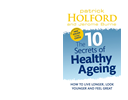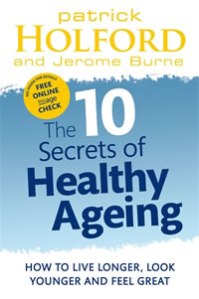Something remarkable happened earlier this week. Open warfare broke out between senior doctors over the benefits of a major government health policy. To prescribe or not to prescribe yet more statins to healthy people? That was the question. Details of the open letter to the head of NICE (the health value-for-money body) challenging its proposal to massively boost prescribing, was carried by most of the papers.
GP, newspaper columnist and author James Le Fanu described the situation to me as “remarkable”. Senior doctors going head-to-head over treatment, he said, had never happened to this degree before. Normal practice was to settle such matters behind closed doors. The transparency being urged on banks, MPs expenses and drug companies had spontaneously erupted in the medical arena.
The first blow had been struck some weeks earlier by alpha male statin supporter Sir Rory Collins who had not just challenged two articles in the BMJ that raised doubts about the safety of statins but then went on an aggressive media offensive. In interviews he claimed that casting doubts on the efficacy and safety of statins would result in the death of thousands of patients by frightening them into stopping taking these life-savers.
Commercial bias corrupting the database
The response contained in the open letter was equally robust. It urged NICE to “withdraw the current guidance on statins for people at low risk of cardiovascular disease until all the data are made available.”
This was really opening a transparency window. What is at issue here is the fact that no independent researchers have been able to get access to the research data that Sir Rory basis his claims on. That’s because they are still owned by the companies that paid for the research and are “commercially sensitive”.
Then another window was thrown up by the second part of the letter’s conclusion. ‘We are concerned that financial conflicts of interest and major commercial bias may have corrupted the database on statins, resulting in an underestimate of the incidence of statin side-effects.’ The letter was signed by the likes of the President of the Royal College of Physicians and a Past Chair of the Royal College of General Practitioners.
Suggesting that there might be a conflict between commercial interests and public health policy is a giant step in the transparency direction. Normal practice is to make it appear that such changes as the one proposed by NICE are the result of careful, informed and impartial consideration of the evidence. And the major component of that evidence base would be the large scale randomised clinical trials of the sort undertaken by Sir Rory. Questioning their reliability and visibility would not be part of the discussion.
The genie is out of the bottle
It seems unlikely that this particular genie is going to be easy to squeeze back into the bottle with consequences for the way we evaluate the risk and benefits of treatments that are still very unclear. However a change is obviously long overdue.
If it hasn’t been possible to arrive at a reliable estimate of the safety and effectiveness of the most widely prescribed class of drugs in the world after spending billions of pounds on running at least 29 major trials, then the system we are using at the moment must be seriously flawed.
As a small contribution to the kind of issues that will need greater attention, I propose a careful look at the way placebo’s are used in randomised trials. In the open letter to NICE there is a fascinating little chart showing the reports of side-effects in statin trials. On the left are the curious names given to trials followed by the percentage of side effects reported by those getting the drug and then the percentage from the placebo group.
AFCAPS/TEXCAPS: Total adverse effects losartan 13.6%: Placebo 13.8%
4S: Total adverse effect simvastatin 6%: Placebo 6%
CARDS: Total adverse effects atorvastatin 25%: Placebo 24%
HPS: Discontinuation rates simvastatin 4.5%: Placebo 5.1%
METEOR: Total adverse effects rosuvastatin 83.3%: Placebo 80.4%
LIPID: Total adverse effects 3.2% Pravastatin: Placebo 2.7%
JUPITER: Discontinuation rate of drug 25% Rosuvastatin 25% placebo. Serious Adverse events 15.% Rosuvastatin 15.5% placebo
WOSCOPS: Total adverse effects. Pravastatin 7.8%: Placebo 7.0%
What instantly stands out is how remarkably and implausibly similar the two groups are. Not just in the same ball park but almost identical in every single case – from 2.7% all the way to 83.3%. Now the statin-positive message that has been taken away from this fact is that this is very reassuring. A recent paper, whose authors include long time critic of drug company fiddling, Dr Ben Goldacre, concluded that statins have virtually no side effects at all.
Whole lot of fiddling going on?
The reasoning being that if they did then the drug percentage would be much higher. The explanation for the almost identical figures is that reports of side-effects are either a kind of reverse placebo effect – you expect a problem so you get one – or a mistake by the patient – you had a pain, you were taking a statin, so you wrongly assumed the statin caused it.
The reverse placebo effect could be part of what is happening, for a slightly different reason that I’ll come to in a moment. But without having any real grip on statistics, medical or otherwise, my sense is that if someone reviewing a piece of research saw that degree of agreement, their first thought would be – fiddling. It is just too precise. I’m comforted by the fact that Dr Le Fanu, who does have a good grip on statistics, agrees.
Of course what is needed to settle the matter is to allow independent researchers to look at the raw data from the trials, especially the “Clinical Study Report” (CRP) the very long documents that gives a huge amount of detail about the methods and results of a trial, but this is part of the secret data that concerns the authors of the letter. (Interstingly Dr Goldacre has written elequently about the need for CRPs to be made available.)
RCT set up boosts negative placebo response
A slightly different suggestion to explain the matching figures is that the anti-placebo effect does get boosted but not because of the patient’s independent assumptions but because of the way that RCT’s are set up. It can be found on the People’s Pharmacy site in a post that looks at why RCTs are not a reliable way of gathering data on side effects.
It makes the point that all patients in a trial have to sign a consent form, which includes the adverse events that they might suffer. One quoted study concludes: “Adverse events mentioned in informed consent (forms) might not only increase expectation effects but might also facilitate the perception and reporting of these symptoms.”
Well yes again possibly but could such “expectation effects” influence 2% of participants in some trials and 80% in others? I’d greatly welcome any more ideas about what is going on here. It’s very mysterious and just don’t believe it is simply the result of patients being so wrong about what is going on in their own bodies. Talk about blame the victim.



I wonder if the placebo used in this case was another drug?
What is contained in a placebo is another dark area. People in trials are keen to know if they are getting the “real thing” and one of the the easiest ways, it is commonly believed, is by watching out for side effects. If you start to feel nauseous, have muscles pains etc – then you are likely to believe that the you are getting the drug. Which is why a few cunning researchers give a placebo which has effects that mimic common side effects of the drug being tested, ensuring that the boost to benefit is transferred to the drug. Most famously, when the is was done with the SSRI antidepressants, the result was that the drug showed up as no more effective than the ‘active’ placebo.
Reported ~identical drug and placebo incidence of side affects is basic stuff in management psychology. You test a group at work and increase the light – production goes up. You increase the light again – production goes up. NOW, you decrease the light – yeah…
In physics, when you test for a particle, it is recognised as a particle. When you test for a wave it is recognised as a wave. All happy with that. OR, as Nietzsche meets Quantum Physics:
‘It is not nature that we see but nature exposed to our manner of questioning? What if truth be a woman?’
If you treat people as objects you get more data, if you treat people as persons you get a response – and if the Laboratory dog doesn’t laugh at your jokes, it doesn’t mean he has no sense of humour
Not sure quantum perspective helps here – statistical fiddling is not unheard of and, pure speculation, it is perfectly possible to boost nocebo effect.
I could understand a situation where a manager, given the task of evaluation a new and expensive lighting system, might test two locations – one with a control group. I would consider it daft when he told each group that, during the study, they might experience headaches, nausea, fatigue and, very rarely, convulsions.
It would eventually sink in, after the contract had been awarded maybe, that by presenting the reported ‘complaints’ of each group as being equal and similar, the seller may have been able to demonstrate ‘statistically’ that any side effects were imaginary.
For a drug Company to deliberately deceive the public as to the risks to health of a drug, supplied to millions of the public, would probably be criminal. I can understand, now, one’s reticence to be so blunt.
I am rather fond of my quantum analogy.
Unfortunately drug companies deliberately deceiving the public about risks is all too common – Ben Goldacre’s Bad Pharma has lots of examples and the account in the BMJ this week of what the makers of the anti-coagulation drug Dabigatran (pradaxa) got up to in order to keep the risks of the drug from public view is shocking. However it is at the moment not criminal to keep drug data hidden. In the States it is a matter for civil law – Dabigatran’s makers Boehringer Ingelheim recently paid out around £360 million to over 4000 patients in compensation for damage by the drug. This is not an option open to UK patients.
I don’t object to quantum analogies I just don’t find them helpful – explaining one thing I don’t understand (a quirk of placebo reporting) by reference to something I understand even less (quantum mechanics) leaves me in even greater darkness.
I wrote up my concerns in an essay High-Cholesterol Paradox http://bit.ly/1fkGYgb
P.S., I had no idea that participants in a drug trial have to sign a consent form that tells them what all the side effects are that they might expect to have! This totally invalidates the trial!
“A recent paper, whose authors include long time critic of drug company fiddling, Dr Ben Goldacre, concluded that statins have virtually no side effects at all.”–This mind-boggling statement really makes me wonder about Dr. Ben Goldacre. The side-effects of statins are very well-known and include muscle pain, muscle weakness, overall weakness and diabetes. Thanks for another great and enlightening article!